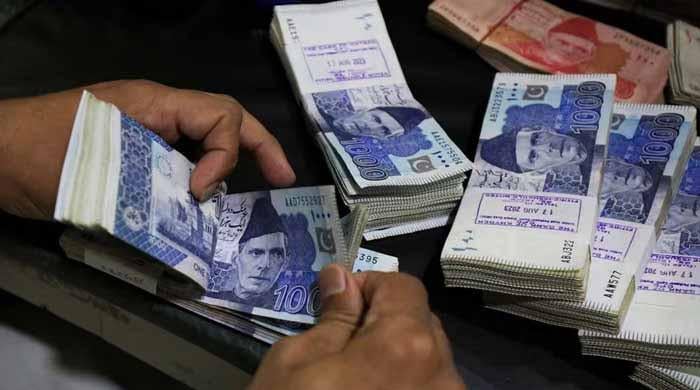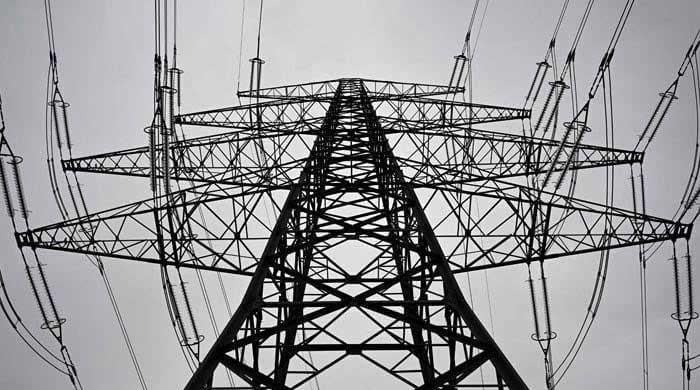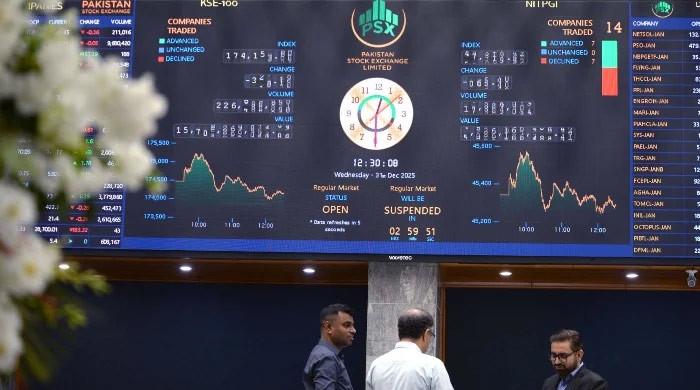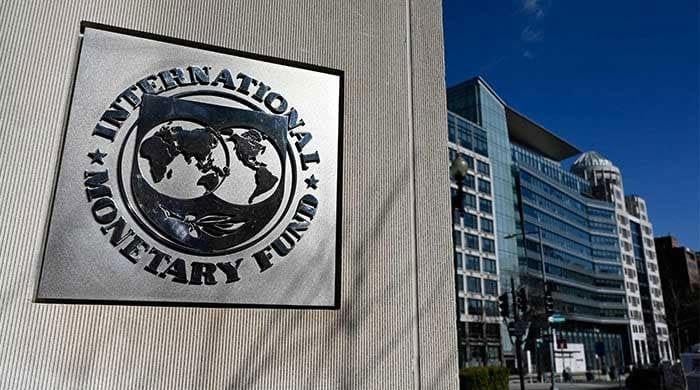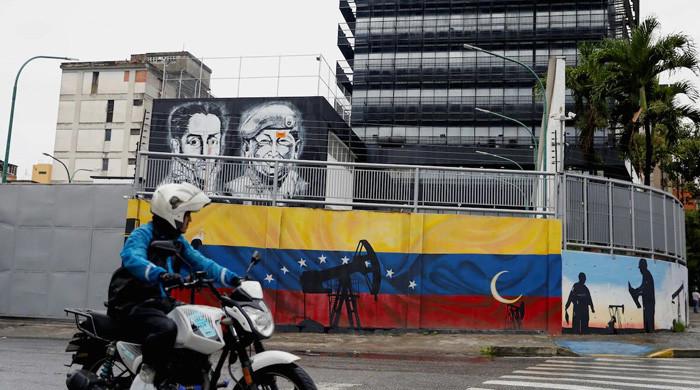World Bank improves Pakistan's GDP growth prospects by almost 1%
World Bank warns debt payment to exports ratio is highest in Pakistan, Sri Lanka
April 14, 2022
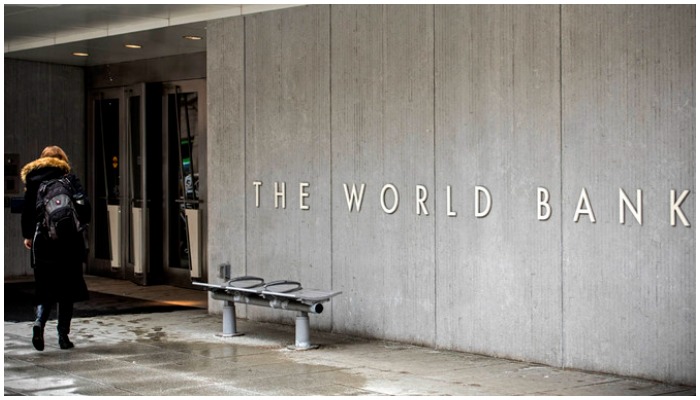
- World Bank warns debt payment to exports ratio highest in Pakistan, Sri Lanka.
- Says Pakistan needs to cut down its huge budget and current account deficits to achieve economic consolidation.
- Says some countries experience a solid rebound in GDP growth while Afghanistan, Pakistan and Sri Lanka facing different crises.
ISLAMABAD: Pakistan's gross domestic product (GDP) growth prospects were improved up to 4.3% from the earlier projection of 3.4% by the World Bank (WB) for the current fiscal year, 2021-22, and to 4% for the next FY, 2022-23, The News reported Thursday.
The WB, in a report launched on Wednesday, warned that the external debt repayment to exports and remittances in South Asia is the highest in Pakistan and Sri Lanka.
“Indicators of ability to pay, such as the ratio of public external debt service to exports and remittances, is highest in Pakistan and Sri Lanka," the WB’s report titled The South Asia Economic Focus, Reshaping Norms: A New Way Forward stated.
The report said that the situation is even worse in Sri Lanka, where market-based refinancing is prevented by a series of sovereign credit rating downgrades as a result of heightened fiscal and external risks
WB Chief Economist for South Asia Hans Timmer, while addressing an online press briefing, said that Pakistan needs to cut down its huge budget and current account deficits in order to achieve consolidation of the economy.
Pakistan’s debt repayment capacity is not vulnerable but medium to long-term, Islamabad would have to narrow down its twin deficits, Timmer added.
The WB’s report states that in Pakistan, GDP growth is expected to slow to 4.3% in FY2021/22 (ending June 2022) and to 4.0% in FY2022/23.
This comes amid monetary tightening measures that began in September 2021, high base effects from the previous year, and continued high inflation eroding real private consumption growth. Beyond that, the expectation is for growth to gradually recover as structural reforms to support macroeconomic stability, increase domestic revenue collections, improve the financial viability of the energy sector, and enhance export competitiveness begin to gain momentum.
The WB states that although the region’s economy is growing again, the recoveries have been uneven across sectors, countries, and groups of people. While production and exports of digital services have risen, other sectors like construction, transportation, and tourism have not fully recovered in most countries.
While some countries experience a solid rebound in GDP growth, Afghanistan faces a humanitarian crisis, Pakistan a political crisis, and Sri Lanka a balance-of-payments crisis. While high-skilled workers retained jobs during the pandemic or found new opportunities, only some unskilled migrant workers have returned to jobs in the cities.
Moreover, men have been able to find new job opportunities more quickly than women.
“Energy subsidies as a percent of GDP are the highest in Pakistan, which means that the price increase in international markets potentially poses a tough fiscal challenge” the WB report added.
Pakistan experienced the mildest exports contraction in the region in 2020, and the recovery led by the textile sector was also the most rapid. Pakistani goods exports fell 54% year-over-year in April 2020 at the height of the pandemic.
Since late 2020, the textile sector, which makes up more than 60% of total goods exports, has led the recovery. Pakistan loosened COVID-19 restrictions earlier than other Asian countries. This helped Pakistan divert orders from competitors and keep goods exports 40% above January 2019 levels.
Knitwear, cotton fabrics, and bed-wear are some of the commodity groups enjoying export subsidies, in addition to a sharp reduction in import tariffs on intermediates for the textile sector, and a favourable exchange rate in the past years.
The government is also providing subsidies and incentives to other sectors to diversify exports and reduce the dependence on textiles. Additional policies were put in place to incentivise industries to open to new markets, especially in areas such as pharmaceuticals, engineering products, and chemicals.
Going forward, the country faces the challenges of diversifying exports and boosting its low exports-to GDP ratio (currently around 10 percent), for example, through a tariff rationalisation to encourage manufacturers to export and compete in global markets.
The overall impacts of higher commodity prices on domestic prices are uncertain and depend on pass-throughs to the local economy.
In March, which is the first whole month since the war started, inflation in Pakistan continues previous trends, with elevated inflation in edible oils and fuel-related categories, while inflation in wheat is subdued at 5%.
On the fiscal side, accumulated government debt during Covid may lead to fiscal consolidation measures, which can face political resistance. General government debt has reached over 70% of GDP in Pakistan, over 80% in India, and over 100% of GDP in Sri Lanka and Maldives (World Bank Macro Poverty Outlook).
In Bhutan, general government debt was already over 100% of GDP in FY2018/19, and it has increased to an estimated 135% of GDP for FY2020/21, reflecting higher gross financing needs from the hydropower projects during the pandemic. To reduce the debt burden, India has followed revenue-led consolidation, relying on growth in goods and services tax and fuel-based tax revenues, while trying to rein in current spending in FY2021/22.
Pakistan had earlier followed its agreement with the IMF to remove tax exemptions and increase the tax on fuels. But rising energy prices domestically and challenges from political opposition have forced the government to offer electricity and fuel price relief. The financing of the price cuts or subsidies can create an additional burden on the fiscal budget, threaten the ongoing programme with the IMF, and limit the use of the fiscal budget on other, more productive projects.
Growth in South Asia, already uneven and fragile, will be slower than previously projected, due to the impacts of the war in Ukraine and persistent economic challenges, says the World Bank in its twice-a-year regional update.
Released on Wednesday, the latest South Asia Economic Focus Reshaping Norms: A New Way Forward projects the region to grow by 6.6% in 2022 and by 6.3% in 2023. The 2022 forecast has been revised downward by 1.0 percentage point compared to the January projection.
Countries in South Asia are already grappling with rising commodity prices, supply bottlenecks, and vulnerabilities in financial sectors. The war in Ukraine will amplify these challenges, further contributing to inflation, increasing fiscal deficits, and deteriorating current account balances.
“South Asia has faced multiple shocks in the past two years, including the scarring effects of the COVID-19 pandemic. High oil and food prices caused by the war in Ukraine will have a strong negative impact on peoples’ real incomes,” said Hartwig Schafer, World Bank Vice President for South Asia.
“Given these challenges, governments need to carefully plan monetary and fiscal policies to counter external shocks and protect the vulnerable, while laying the foundation for green, resilient and inclusive growth.”
Though GDP growth continues to be solid during the recovery, all countries in the region will face challenges ahead. In India, household consumption will be constrained by the incomplete recovery of the labor market and inflationary pressures. Maldives faces vulnerabilities due to its large imports of fossil fuels as a share of GDP and a reduction in tourists from Russia and Ukraine. In Sri Lanka, the economic outlook is highly uncertain due to fiscal and external imbalances.
In Afghanistan, higher food prices will exacerbate food insecurity. One of Pakistan’s challenges in the current environment is its energy subsidies, which are the largest in the region. Bangladesh will face weaker demand from Europe for its exports. On a positive note, exports of services from the region are on the rise.
The war and its impact on fuel prices can provide the region with much-needed impetus to reduce reliance on fuel imports and transition to a green, resilient and inclusive growth trajectory. The report recommends that countries steer away from inefficient fuel subsidies that tend to benefit wealthier households and deplete public resources. South Asian countries should also move towards a greener economy by gradually introducing taxation that puts tariffs on products that cause environmental damage.
“The introduction of green taxation can have multiple quantifiable benefits for South Asia, including improved energy security, environmental gains and increased fiscal revenues,” said Timmer.
“These revenues could be utilized for adaptation against climate-related disasters and to strengthen social safety net systems.”
Another challenge the region faces is the disproportionate economic impact the pandemic has had on women. The report includes in-depth analysis of gender disparities in the region and their link with deeply rooted social norms, and recommends policies that will support women’s access to economic opportunities, tackle discriminatory norms, and improve gender outcomes for inclusive growth.




